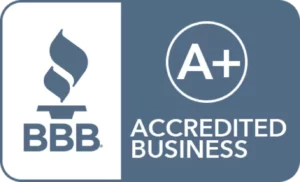The Internal Revenue Code (IRC) & ERISA does not describe what a Solo 401(k) Plan can invest in, only what it cannot invest in. Internal Revenue Code Sections 408 & 4975 prohibits Disqualified Persons from engaging in certain type of transactions. The purpose of these rules is to encourage the use of qualified retirement plans for accumulation of retirement savings and to prohibit those in control of Solo 401(k) qualified retirement plans from taking advantage of the tax benefits for their personal account. In the following, you will learn about the Solo 401(k) Prohibited Transaction Rules.
Who is a “Disqualified Person?”
The IRS has restricted certain transactions between the Solo 401(k) plan and a “disqualified person.” The rationale behind these rules was a congressional assumption that certain transactions between certain parties are inherently suspicious and should be disallowed.
The definition of a disqualified person (IRC Section 4975(e)(2)) extends into a variety of related party scenarios, but generally includes the plan participant, any ancestors or lineal descendants of the Plan Participant, and entities in which the Plan Participant holds a controlling equity or management interest. In essence, under Code Section 4975, a disqualified person means:
- A fiduciary (e.g., the Solo 401k Plan Participant, or person having authority over making 401(k) plan investments),
- A person providing services to the plan (e.g., the trustee or custodian),
- An employer, any of whose employees are covered by the plan (this generally is not applicable to Solo 401k Plans but does include the owner of a business that establishes a qualified retirement plan),
- An employee organization any of whose members are covered by the plan,
- A 50 percent owner of C or D above,
- A family member of A, B, C, or D above (family members include the fiduciary’s spouse, parents, grandparents, children, grandchildren, spouses of the fiduciary’s children and grandchildren (but not parents-in-law),
- An entity (corporation, partnership, trust or estate) owned or controlled more than 50 percent by A, B, C, D, or E. Whether an entity is a disqualified person is determined by considering the indirect stockholdings/interest which would be taken into account under Code Sec. 267(c), except that members of a fiduciary’s family are the family members under Code Sec. 4975(e)(6) (lineal descendants) for purposes of determining disqualified persons.
- A 10 percent owner, officer, director, or highly compensated employee of C, D, E, or G,
- A 10 percent or more partner or joint venturer of a person described in C, D, E, or G.
Note: brothers, sisters, aunts, uncles, cousins, step-brothers, step-sisters, and friends are NOT treated as disqualified persons.
Solo 401(k) Prohibited Transaction Rules
The types of prohibited transactions can be best understood by dividing them into three categories: Direct Prohibited Transactions, Self-Dealing Prohibited Transactions, and Conflict of Interest Prohibited Transactions.
Direct Prohibited Transactions
Subject to the exemptions under Internal Revenue Code Section 4975(d), a “Direct Prohibited Transaction” generally involves one of the following:
4975(c)(1)(A): The direct or indirect Sale, exchange, or leasing of property between a Plan and a “disqualified person”
Example 1: Joe sells an interest in a piece of property owned by his Plan to his son.
Example 2: Beth leases real estate owned by her Solo 401k Plan to her daughter.
Example 3: Mark uses his Solo 401k Plan funds to purchase an LLC interest owned by his mother.
4975(c)(1)(B): The direct or indirect lending of money or other extension of credit between a Plan and a “disqualified person”
Example 1: Ted lends his wife $70,000 from his Plan.
Example 2: Mary personally guarantees a bank loan to her Solo 401k Plan to purchase real estate.
Example 3: Dan uses his Solo 401k Plan funds to lend an entity owned and controlled by his father $18,000.
4975(c)(1)(C): The direct or indirect furnishing of goods, services, or facilities between a Solo 401k Plan and a “disqualified person”
Example 1: Andrew buys a piece of property with his Solo 401k Plan funds and hires his father to work on the property.
Example 2: Rachel buys a condo with her Solo 401k Plan funds and personally fixes it up.
Example 3: Betty owns an apartment building with her Plan and hires her mother to manage the property.
4975(c)(1)(D): The direct or indirect transfer to a “disqualified person” of income or assets of a Plan
Example 1: Ken is in a financial jam and takes $32,000 from his Plan to pay a personal debt.
Example 2: John uses his Solo 401k Plan to purchase a rental property and hires his friend to manage the property. The friend then enters into a contract with John and transfers those funds back to John.
Example 3: Melissa invests her Solo 401k Plan funds in a real estate fund and then receives a salary for managing the fund.
Self-Dealing Prohibited Transactions
Subject to the exemptions under Internal Revenue Code Section 4975(d), a “Self-Dealing Prohibited Transaction” generally involves one of the following:
4975(c)(1)(E): The direct or indirect act by a “Disqualified Person” who is a fiduciary whereby he/she deals with income or assets of the Plan in his/her own interest or for his/her own account
Example 1: Debra who is a real estate agent uses her Solo 401k Plan funds to buy a piece of property and earns a commission from the sale.
Example 2: Ben wants to buy a piece of property for $120,000 and would like to own the property personally but does not have sufficient funds. As a result, Ben uses $110,000 from in his Solo 401k Plan and $10,000 personally to make the investment.
Example 3: Nancy uses her Solo 401k Plan funds to invest in a real estate fund managed by her son. Heidi’s father receives a bonus for securing Nancy’s investment.
Conflict of Interest Prohibited Transactions
Subject to the exemptions under Internal Revenue Code Section 4975(d), a “Conflict of Interest Prohibited Transaction” generally involves one of the following:
4975(c)(i)(F): Receipt of any consideration by a “Disqualified Person” who is a fiduciary for his/her own account from any party dealing with the Plan in connection with a transaction involving income or assets of the Plan.
Example 1: Jason uses his Solo 401k Plan funds to loan money to a company in which he manages and controls but owns a small ownership interest in.
Example 2: Cathy uses her Plan to lend money to a business that she works for in order to secure a promotion.
Example 3: Eric uses his Solo 401k Plan funds to invest in a fund that he manages and where his management fee is based on the total value of the fund’s assets.
Statutory Exemptions
Congress created certain statutory exemptions from the prohibited transaction rules outlined under IRC Section 4975(c). For these certain transaction, Congress believed there is a legitimate reason to permit them. For these transactions, Congress has issued a blanket statutory exemptions permitting these transactions assuming that certain requirements specified are satisfied.
Below is a list of some of the statutory exemptions that apply to Solo 401(k) plans:
- Any contract with a disqualified person for office space, legal, accounting or other services necessary for the operation of the Plan as long as reasonable compensation is paid. Note – this exemption does not apply to a Plan fiduciary (the Plan trustee) as per Treasury Regulation Section 54.4975-6(a)(5).
- The provision of ancillary services to a Solo 401(k) plan by a bank trustee.
- receipt by a disqualified person of any benefit to which he may be entitled as a participant or beneficiary in the plan, so long as the benefit is computed and paid on a basis which is consistent with the terms of the plan as applied to all other participants and beneficiaries.
S Corporation Stock
Because of the shareholder restrictions imposed on “S” Corporations, an Solo 401(k) cannot own stock in an S Corporation. Note – a Solo 401(k) can own stock in a “C” Corporation.
Plan Asset Rules
The Department of Labor’s (DOL) Plan Asset Rules essentially define when the assets of an entity are considered ‘Plan” assets. Under the rules, 401(k) qualified plans are frequently viewed as pension plans subjecting them to the Plan Asset Rules. Under the Plan Asset Rules, if the aggregate plan ownership of an entity is 25% or more of all the assets of the entity, then the equity interests and assets of the “investment entity” are viewed as assets of the investing plan for purposes of the prohibited transactions rules, unless an exception applies. Also, if a Solo 401(k) or group of related qualified plans owns 100% of an “operating company,” the operating company exception will not apply and the company’s assets will still be treated as plan assets.
In summary, the Plan Asset Rules can be triggered if:
- 100% of an “operating company” is owned by one or more 401(k) plans and disqualified persons, in which case all the assets of the “operating company” are deemed Plan assets (assets of the 401(k)), or
- If 25% or more of an “investment company” is owned by 401(k) plans and disqualified persons, in which case all the assets of the “investment company” are deemed Plan Assets (assets of the 401(k)). In determining whether the 25% threshold is met, all 401(k) owners are considered, even if they are owned by unrelated individuals.
Exceptions to the DOL Plan Asset Regulations
The Plan Asset look-through rules do not apply if the entity is an operating company or the partnership interests or membership interests are publicly offered or registered under the Investment Company Act of 1940 (e.g., REITs). They also do not apply if the entity is an “operating company,” which refers to a partnership or LLC that is primarily engaged in the real estate development , venture capital or companies making or providing goods and services, such as a gas station, unless the “operating company” is owned 100% by a 401(k) qualified plan or IRA and/or disqualified persons. In other words, if a 401(k) owns less than 100% of an LLC that is engaged in an active trade or business, such as a restaurant or manufacturing plant, the Plan Asset Rules would not apply. However, the plan investment may still be treated as a prohibited transaction under IRC Section 4975. In addition, the Unrelated Business Taxable Income may apply to subject to the 401(k) to tax on the income or gains generated from the operating business.
Note: The fact that a transaction does not trigger the Plan Asset Rules does not mean that the transaction may not be deemed a prohibited transaction. In other words, a transaction that does not fall under the Plan Asset Rules can still be treated as a prohibited transaction pursuant to IRC Section 4975.
The following are a number of examples that demonstrate the scope of the Plan Asset Rules.
Example 1: A general partner of a hedge fund wishes to invest his Solo 401(k) plan in the hedge fund he manages. If the percentage of 401(k) ownership, including what it would be after the General Partner invests his Solo 401(k) in the fund, equals or exceeds 25% of the equity interests, then the fund’s assets are considered “plan asset.” That means that a transaction between the general partner, as a disqualified person, and the fund, could be deemed a prohibited transaction because the assets of the fund are viewed as assets of his plan, since a disqualified person cannot transact with the assets of his plan. Accordingly, the General Partner cannot receive personal benefits from his 401(k) investment into the fund. Thus, the General Partner would not be permitted to receive any management fees associated with the ownership interest in the fund because he would be receiving a personal benefit from his Solo 401(k). Note – the General Partner’s plan investment in the fund may also be deemed a direct or indirect prohibited transaction under IRC Section 4975.
Example 2: Jane ‘s Solo 401(k) plan owns 100% of ABC, LLC, which operates a retail store. ABC, LLC makes a loan to Jane. The loan is subject to the Plan Asset Rules and will also be considered a prohibited transaction. Note – any income generated by ABC, LLC that is allocated to the plan would also likely be subject to the Unrelated Business Income tax.
Example 3: Steve’s Solo 401(k) owns 15% of ABC, LLC, an investment company. Allan’s IRA owns 20% of ABC, LLC. Steve and Allan are unrelated. Since a 401(k) qualified plan and an IRA (Plans) own greater than 25% of ABC, LLC, an “investment company,” assets of ABC, LLC are Plan Assets and deemed owned by each plan. Thus, if ABC, LLC makes a loan to Steve’s father, the loan would be a prohibited transaction.
Example 4: Robert’s Solo 401(k) plan invests in ABC, LLC, which will purchase a gas station, an “operating company.” Robert will take an annual salary of $50,000 to run the gas station. The payment of the salary would be a self-dealing indirect prohibited transaction. Note – any income generated by the gas station that is allocated to the plan would also likely be subject to the Unrelated Business Income tax.
Determining Whether a Specific Transaction is a Prohibited Transaction
Through an arrangement between the IRS and the Department of Labor (DOL), it is the DOL’s responsibility to determine whether a specific transaction is a prohibited transaction and to issue prohibited transaction exemptions. When the IRS discovers what appears to be a prohibited transaction in an individual’s IRA, it turns the matter over to the DOL to make the determination. The DOL reviews the situation and responds to the IRS, which in turn responds to the taxpayer. If the IRA grantor wants to apply for a prohibited transaction exemption, he or she must apply to the DOL. The DOL has the authority to issue prohibited transaction exemptions. Some, known as “prohibited transaction class exemptions” (PTCEs), are available for anyone’s reliance, while others, called “individual prohibited transaction exemptions” (PTEs), are issued only to the applicant.







